Computer Basics - How to use a computer keyboard 键盘



REF
https://www.computerhope.com/issues/ch001689.htm
https://www.digitalunite.com/technology-guides/computer-essentials/using-computer/how-use-computer-keyboard
A computer keyboard is an input device used with all types of computers. Newer devices like a smartphone and tablet even still use an on-screen keyboard. This page is designed to help new computer users become more familiar and efficient with their keyboard. For new users, we suggest reading through all the sections below and doing all the practices.
Connecting the keyboard 键盘
Before you can use the keyboard, it must be connected properly to the computer.
How to turn on the keyboard 打开键盘(wireless 无线)
All computer keyboards with a cord connecting them to the computer automatically turn on when the computer turns on. However, if you have a wireless keyboard(无线键盘), it can be turned on and off to conserve the batteries. To turn these keyboards on, flip the keyboard over and look at the back of the keyboard. Near the bottom or top of the keyboard should be a switch(开关) that can be moved to the on or off position.
You can test if the computer is on by pressing the Caps Lock, Scroll Lock, or Num Lock keys and looking for an indicator light. As these keys are enabled or disabled, a light should turn on or off. If you're unable to get any lights, the keyboard is not working.
Familiarizing yourself with the keyboard
Below is an overview of a desktop computer keyboard. This picture shows the major sections of the keyboard. Each section is explained in detail below.

Overview of each section of the keyboard
Alphanumeric keyboard
The alphanumeric keyboard is the primary portion of the keyboard with letters(字母), numbers(数字), punctuation(标点), and some symbol(符号) keys. Today, most users use QWERTY keyboards, as shown in the illustrations. You can tell if you are using a QWERTY keyboard by looking at the first six letters to see if they spell "QWERTY."
Each of the group of alphanumeric keys is positioned on rows of keys. Most keyboards have six rows of keys with the fingers resting on the home row(移动光标到行首),end(移动光标到行尾). Other keyboard rows include the function keys(功能键), number keys(数字键), top row(向上箭头), bottom row(向下箭头), and spacebar row(空格). See the link below for a full listing of each key and symbol and their functions.
Function keys
The function keys or F1 through F12 or F19 keys are used in programs as keyboard shortcut to performed frequently performed tasks. For example, the F1 key is the key to open the online help for most programs.
On some keyboards, the function keys can activate additional functions on a computer. Used in combination with the Fn key(Function,功能键), the function keys can activate other functions, like changing screen brightness, accessing media controls, or turning off the computer.
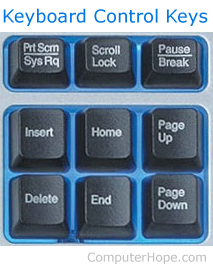
Control and toggle keys
The control keys or toggle keys give the user additional control over text manipulation and cursor(光标,指针) placement. They may also be used as keyboard shortcut(快捷键) in many programs.
Control keys and Ctrl keys are different.
Keypad
Although not available on all computer keyboards, especially laptops, the keypad gives the user quick access to numbers and math functions such as plus, divide, times, and subtract.
Wrist pad
In our example picture, the Saitek keyboard has a wrist pad intended to help support the user's wrists. Although many keyboards do not include a wrist pad, hundreds of different options can be purchased at a computer store or online.
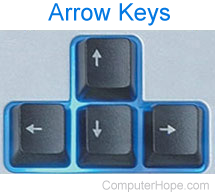
Arrow keys
The arrow keys are four directional keys that allow you to move the cursor or change a highlighted selection.
Special keys or media keys on a multimedia keyboard
Multimedia keyboards have additional buttons not found on a traditional keyboard.
Start typing and how to position hands
Before typing, place your hands in the proper position, with your fingers on the home row keys. When you are typing, glance at your fingers to ensure that each finger is pressing the correct key.
There are small bumps (homing bars) on the "F" and "J" keys that help you find the proper position without looking at the keyboard. Your index fingers on both hands should be able to feel these bumps.
Below is a picture to help illustrate where each finger should be positioned and the home row keys. Your left-hand fingers should be positioned over A, S, D, and F keys, and your right hand should be positioned over the J, K, L, and ; keys. Also, each color helps illustrate what fingers are responsible for what key.
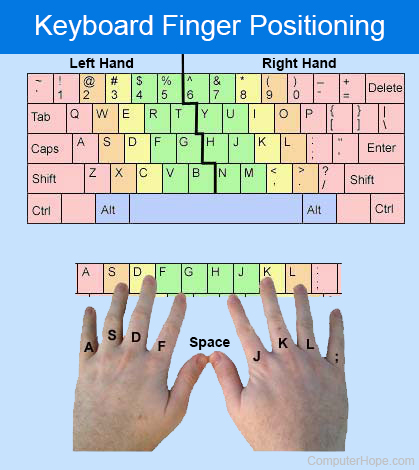
If you have never learned how to type properly and use the hunt-and-peck method of typing, we strongly encourage you to practice throughout this page using the proper technique. Not only does this improve your typing efficiency, but it also reduces the strain you may encounter from having to look down at the keyboard.
Correcting errors
It's inevitable that you'll make errors as you type, the backspace key and delete key help you correct these errors. Using the backspace key erases one character to the left of the cursor, and delete erases one character to the right of the cursor.
Apple computer keyboards have two delete keys. The big delete key on the keyboard acts the same as a backspace key, and the other delete key acts as a delete key.
Using the arrow keys to move around
One of the best methods to improve your efficiency on the keyboard is to avoid using the mouse whenever possible. Having to move your hand away from the keyboard to the mouse and then back to the keyboard wastes a lot of time. One method of avoiding the mouse is to use the arrow keys to move the cursor instead of using the mouse to move the cursor.
Deleting text one letter and one word at a time
It may also be necessary to delete more than one letter or even a word at a time. Use the below practice to delete all of the text from a line.n Ctrl, and press Backspace.
Uppercase, lowercase, and all caps
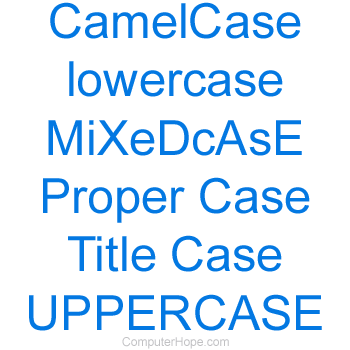
Unless your Caps Lock(大写锁定键) key is turned on, your computer types everything in lowercase. To make the first letter of a sentence or word uppercase, hold down Shift on the keyboard and press the letter you want to capitalize.
If you want all of the words capitalized press Caps Lock, which should turn on an LED (light-emitting diode) indicator indicating it is enabled. Once enabled, everything remains capitalized unless you hold down Shift or press Caps Lock again.
Getting to the beginning and end of a line
The Home key and End key can also be used to get to the beginning of the line. Use the below practice to get to the beginning and end of the line of text.
Highlighting text using the keyboard
It is also possible to highlight text using the keyboard with the Shift key. Follow the below practice to highlight text in the below sentence.
When text is highlighted, press Del to delete all highlighted text or start typing to replace highlighted text.
Typing numbers and symbols above numbers
The keyboard has two areas where numbers can be typed on the keyboard. In this section, we go over the numbers and symbols above the numbers at the top of the keyboard. Using the 10-key keypad is covered later.
The numbers 1 through 0 at the top of the keyboard each have two functions, the number and the symbol. The number key alone enters the number, and if you hold down Shift while pressing the number, its symbol is entered. For example, pressing 2 enters "2" on the screen. Holding down Shift and pressing 2 enters the at sign (@).
Below are each number key and the symbols on a US keyboard. Clicking any of the links opens a page with full information about each of the symbols with their uses.
- 1 (!) exclamation mark
- 2 (@) at sign
- 3 (#) hash
- 4 ($) dollar sign
- 5 (%) percent
- 6 (^) caret
- 7 (&) ampersand
- 8 (*) asterisk
- 9 (() open parenthesis
- 0 ()) close parenthesis
Copy and paste text using the keyboard
Copying and pasting text is something every computer user is going to do more than once. Knowing how to copy and paste text using the keyboard can save you a lot of time on the computer.
You can also cut the text instead of copying the text to move the text from one box to the other box. To cut text, you use the Ctrl+X or Command+X keyboard shortcut.
Further steps and information on copying and pasting text using the keyboard, mouse, or touch screen on any device is also on the link below.
Using the 10-key
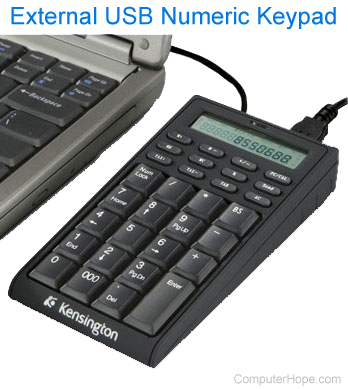
If your keyboard has a numeric keypad, it can save you a lot of time when you're typing numbers in a calculator or spreadsheet. The picture shows a USB (universal serial bus) keypad connected to a laptop.
Before using the 10-key, make sure your right hand is properly positioned on the keypad. The home row for the numeric keypad is 4, 5, 6, and Enter. Your index finger on your right hand should be on the number 4. Your middle finger should be on 5, your ring finger on 6, and your pinky rests on the plus (+) key.
There is usually a small bump on the five key to help position your right hand without looking.
After your hand is in the position, you can use the below practice to practice using the keypad.
Keyboard shortcuts
One of the best methods of becoming more efficient with your computer is to learn and memorize as many keyboard shortcuts as possible. Your typing becomes much faster if you don't have to move your hand to the mouse. So, keyboard shortcuts help increase the speed at which you can use your computer.
Computer Hope has hundreds of keyboard shortcuts for popular programs and operating systems. Below are a few links to our keyboard shortcuts to help get you started.
键盘上所有特殊符号的英文读法
- ! 感叹号 exclamation mark/bang /ˌekskləˈmeɪʃn mɑːk/
? 问号 question mark
, 逗号 comma英 /ˈkɒmə/ 美 /ˈkɑːmə/
. 点号 dot/period/point
: 冒号 colon英 /ˈkəʊlən; ˈkəʊlɒn/
; 分号 semicolon 英 /ˌsemiˈkəʊlən; ˌsemiˈkəʊlɒn/
” 双引号 quotation marks/double quote 英 /kwəʊˈteɪʃn mɑːks/
‘ 单引号/撇号 apostrophe/single quote 英 /əˈpɒstrəfi/
` 重音号 backquote/grave accent美 /ɡreɪv ˈæksent/
* 星号 asterisk/star英 /ˈæstərɪsk/
+ 加号 plus sign
- 减号/横线 hyphen/dash/minus sign/ 英 /ˈhaɪfn/
= 等号 equal sign
/ 斜线xie-xian slash
\ 反斜线 backslash/escape英 /ɪˈskeɪp/
| 竖线shu-xian bar/pipe/vertical bar
_ 下划线xia-hua-xian underline/underscore
$ 美元符号 dollar sign
@ at, at sign
# 井号 crosshatch/sharp/hash
% 百分号 percent sign/mod英 /mɒd/
& and/和/兼(he,jian) and/ampersand英 /ˈæmpəsænd/
^ 折音号 circumflex/caret 英 /ˈsɜːkəmfleks/ 英 /ˈkærət/
~ 波浪号(bo-lang-hao) tilde 英 /ˈtɪldə/
{} (左右)花括号/大括号 (left/right|open/close) braces英 /ˈbreɪsɪz/
[] (左右)方括号/中括号 fang-kuo-hao (left/right|open/close) brackets 美 /ˈbrækɪts/
() (左右)圆括号/小括号 (left/right|open/close) parentheses英 /pəˈrenθəsiːz/
<> 尖括号 angle brackets
< 大于号 less than
> 小于号 greater than



【推荐】国内首个AI IDE,深度理解中文开发场景,立即下载体验Trae
【推荐】编程新体验,更懂你的AI,立即体验豆包MarsCode编程助手
【推荐】抖音旗下AI助手豆包,你的智能百科全书,全免费不限次数
【推荐】轻量又高性能的 SSH 工具 IShell:AI 加持,快人一步
· 开源Multi-agent AI智能体框架aevatar.ai,欢迎大家贡献代码
· Manus重磅发布:全球首款通用AI代理技术深度解析与实战指南
· 被坑几百块钱后,我竟然真的恢复了删除的微信聊天记录!
· 没有Manus邀请码?试试免邀请码的MGX或者开源的OpenManus吧
· 园子的第一款AI主题卫衣上架——"HELLO! HOW CAN I ASSIST YOU TODAY
2023-05-08 ibm power 内存条 顺序 P740 P720 740
2020-05-08 How do I run Adobe Flash on Chrome?
2018-05-08 reshape2
2012-05-08 如何批量删除Excel中的空白行
2009-05-08 教你如何视频截图
2009-05-08 Auto format Phone number